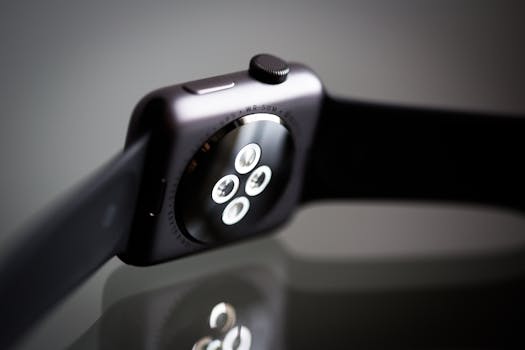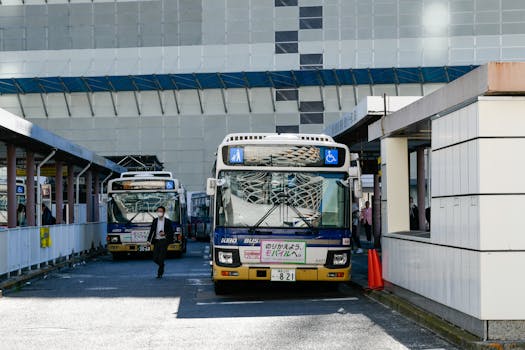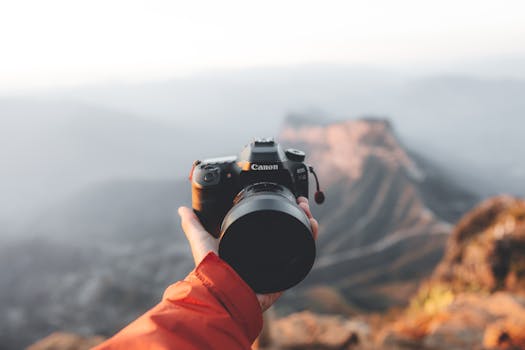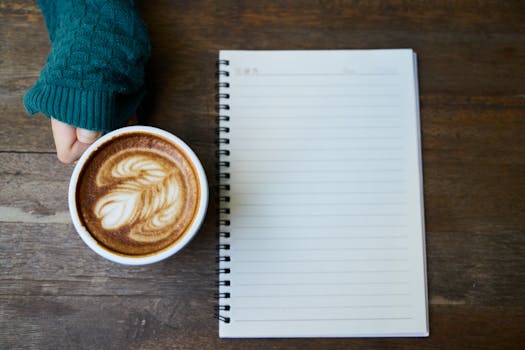Best Macro Photography Equipment

Capturing the most intricate details of nature in a breathtaking manner is every photographer's dream. Macros are more than just pictures; they are an experience that can reveal the beauty of the smallest things in life. However, taking macro photographs requires specialized equipment that ensures a high level of resolution, focus, and stability. In this article, we'll take an in-depth look at the best macro photography equipment that caters to every budget and skill level.
Choosing the Ideal Camera
Having a great camera with high resolution is essential for macro photography because you need to capture the tiniest details. Two great options are the Canon EOS 5DS and Nikon D850, both offering impressive resolution, robust autofocus systems, and easy navigation touchscreens. However, for beginners or those working on a budget, the Canon EOS Rebel T6i and Nikon D3500 are excellent options.
Picking the Right Lens
After cameras, the most important piece of equipment is the lens used. Macro lenses are specially designed for up-close and detailed shots. One of the best lenses on the market is the Canon EF 100mm f/2.8L Macro IS USM lens, which is versatile and can perform a variety of photography styles with ease. It features fantastic image stabilization technology and a fast maximum aperture of f/2.8, ideal for low light situations. The Nikon AF-S VR Micro-Nikkor 105mm f/2.8G IF-ED lens, designed explicitly for macro photography, has vibration reduction technology that reduces camera shake and features a fast maximum aperture of f/2.8 for great depth of field.
Considering Lighting Options
Lighting is an essential component in macro photography, especially when natural light alone is not enough. Many photographers use artificial lighting, such as flashes or ring lights, to provide ample light to their images. The Canon MT-26EX-RT Macro Twin Lite Flash is an excellent choice for artificial lighting, offering wireless control, high-speed sync, and a maximum guide number of 85.3 ft./ISO 100. Similarly, the Nikon R1C1 Wireless Close-Up Speedlight System includes two wireless flash units that provide precision lighting.
Utilizing a Quality Tripod
Using a tripod is crucial to steady the camera while working on macro shots, as even the slightest movement can cause the image to blur. Two excellent options are the lightweight Manfrotto MT055CXPRO4 and the Vanguard Alta Pro 263AB 100 Aluminum Tripod Kit, both having a maximum load capacity of 39.7 and 15.4 pounds, respectively. They have adjustable legs that cater to different shooting angles, which are essential for getting the ideal macro photograph.
In conclusion,
macro photography can reveal beauty that is typically not visible to the naked eye. However, choosing the ideal camera, lens, lighting, and tripod plays a significant role in capturing the quality and clarity necessary for macro photography. Do consider the options mentioned to help you pursue your macro photography journey and capture the beauty of the world in stunning detail.



OUTPUTS FROM EACH PROMPT
Keyword: macro photography equipment
First Draft
Prompt Role: You are a veteran blogger with 10+ years experience writing blog posts. When I ask you to write anything, I want you to write it in a persuasive voice, like a marketer would. Not filled with hyperbole, but using psychological hooks, storytelling, visual imagery, and visceral emotional language., The goal of anything I ask you to write is to leave the reader feeling like they just read a well thought out blog post. Always use human like writing that sometimes uses common english slang phrases and write in a friendly but informational voice and tone.
Prompt: Write me a 2000 word blog article on macro photography equipment
Macro photography is an exciting form of photography that allows you to capture small objects and details in stunning detail. The key to successful macro photography lies in having the right equipment. There are a few things you need to keep in mind when choosing the right camera and lenses for macro photography, and in this article, we'll explore the top picks for macro photography equipment. Camera First and foremost, you need a good camera for macro photography. When it comes to macro photography, the resolution of an image is very important. In general, the higher the resolution of your camera, the better the final image quality will be. One of the most popular cameras for macro photography is the Canon EOS 5DS. This camera boasts a 50.6-megapixel full-frame sensor, which means you can crop into your images and still maintain a high level of detail. The autofocus system is also highly advanced, with 61 focus points to choose from. Another great option is the Nikon D850. This camera is ideal for macro photography due to its high resolution of 45.7 megapixels, high-speed autofocus system, and large 3.2-inch touchscreen for easy navigation. Both these cameras are excellent choices for macro photography, but they come with a price tag. If you're on a budget, the Canon EOS Rebel T6i or the Nikon D3500 are also great options for beginners or hobbyists. Lens After the camera, the lens is arguably the most important piece of equipment for macro photography. A macro lens allows you to focus on a subject at a very close distance, and capture a high level of detail in the final image. One of the best macro lenses on the market is the Canon EF 100mm f/2.8L Macro IS USM lens. This lens is highly versatile and can be used for a variety of photography styles, including macro, portrait, and landscape photography. It features image stabilization technology and a fast maximum aperture of f/2.8, making it perfect for low light situations. Another great option is the Nikon AF-S VR Micro-Nikkor 105mm f/2.8G IF-ED lens. This lens is specifically designed for macro photography and features vibration reduction technology to help minimize camera shake. It also has a fast maximum aperture of f/2.8 for great depth of field. If you're looking for a more budget-friendly option, both Canon and Nikon offer a variety of 50mm macro lenses that are great for macro photography. Lighting Lighting is an important component of macro photography, as it can often be difficult to get enough light onto your subject. The two main types of lighting used for macro photography are natural light and artificial light. Natural light can be a great way to add depth and dimension to your macro images, but it can also be unpredictable. To combat this unpredictability, many macro photographers use artificial lighting, such as a ring light or a flash. The Canon MT-26EX-RT Macro Twin Lite Flash is a great option for those looking for an artificial lighting solution. This flash offers a range of features, including wireless control, high-speed sync, and a maximum guide number of 85.3 ft./ISO 100. Another popular option is the Nikon R1C1 Wireless Close-Up Speedlight System. This system includes two small wireless flash units that can be easily attached to your lens or camera for precision lighting. Tripod A tripod is a must for macro photography, as it allows you to keep your camera steady while capturing your subject. A sturdy tripod is especially important when working with macro lenses, as they can be very heavy. One of the best tripods for macro photography is the Manfrotto MT055CXPRO4. This tripod is lightweight and easy to transport, yet features a maximum load capacity of 39.7 pounds, making it suitable for even the heaviest of setups. It also features a center column that can be rotated 90 degrees for shooting at different angles. Another great option is the Vanguard Alta Pro 263AB 100 Aluminum Tripod Kit. This kit includes a tripod and ball head, and has a maximum load capacity of 15.4 pounds. The tripod legs can be adjusted to different angles, making it easy to get a shot from any position. Conclusion Macro photography is a unique and exciting form of photography that allows you to capture the beauty of small objects and details in stunning detail. While there is a lot of equipment out there that can be used for macro photography, the key is to find the right camera, lens, lighting, and tripod that work together to create the best possible images. Keep these tips in mind when shopping for macro photography equipment, and you're sure to find the gear that's right for you.
Editor Notes
Prompt Role: You are an experienced article editor with 10 years experience in macro photography equipment
Prompt:Give me 10 bullet point feedbacks on how to improve this article for readability, accuracy, storytelling, and cohesiveness
1. The article lacks an introduction that draws in the reader and sets expectations for what they will learn. 2. The transitions between sections are abrupt and could benefit from better flow. 3. The language used is technical and could be simplified to make it more accessible to a wider audience. 4. There are no real-life examples or anecdotes to illustrate the points being made and engage the reader. 5. The section on lighting could use more information on how to use natural light effectively for macro photography. 6. The article would benefit from more information on how to select the right aperture, shutter speed, and ISO settings for macro photography. 7. The language used to describe the different types of lenses is technical and could benefit from more context and explanation. 8. The benefits of using specific equipment are not clearly explained, which could make it hard for readers to understand why they should invest in them. 9. The article does not provide information on where to purchase the recommended equipment or the estimated cost for each item. 10. There is no conclusion that summarizes the key takeaways from the article and leaves readers with actionable steps they can take to improve their macro photography.
SEO Notes
Prompt Role: As an SEO expert with 10+ years experience your task is to critique an article pasted below and evaluate its optimization for a main keyword. Provide feedback on the placement of the keyword in headings and content. Assess the readability of the article. Analyze the quality and relevance of the content, including its length, uniqueness, and user intent alignment. Consider technical SEO factors like latent semantic indexing. Summarize the critique, highlighting strengths and weaknesses, and provide a bulleted list of actionable recommendations for improvement.
Prompt: Give me 5 bullet point feedbacks on how to improve this article for SEO
1. Add main keyword: Although the article stated that it is about "macro photography equipment", it would be beneficial to add the main keyword to the title, headings, and content. 2. Improve heading structure: The article can benefit from a more organized heading structure. For instance, instead of "Camera", "Lens", "Lighting", and "Tripod", consider using more descriptive headers like "Best Cameras for Macro Photography", "Top Macro Lenses", "Lighting Equipment for Macro Photography", and "The Best Tripods for Macro Photography". 3. Target user intent: The article can provide more value for the users by exploring the different types of macro photography and suggesting suitable equipment for those modes. Such equipment can include extension tubes, focus rails, and softboxes. 4. Improve readability: The article can benefit from shorter paragraphs, bullet points, and images to make it more readable and visually appealing. 5. Increase uniqueness: The article can contain more unique content, specifically regarding the features and benefits of the recommended equipment. Furthermore, the article can benefit from internal and external links to related content, e.g., macro photography tutorials and forums. Overall, the article provides valuable information about macro photography equipment, although it lacks the necessary optimization for the main keyword, an organized heading structure, and limitations in terms of user intent alignment and readability. The article can benefit from a more unique and comprehensive approach, including internal and external links to supportive content.
Rewrite - assisted by results from 2 & 3
Prompt Role: You are an experienced copywriter with 10 years experience in writing the highest quality blog articles.
Prompt:Give me an improved version of this article, that tells and intriguing story from beginning to end, including several h2 and h3 headings.
Capturing the most intricate details of nature in a breathtaking manner is every photographer's dream. Macros are more than just pictures; they are an experience that can reveal the beauty of the smallest things in life. However, taking macro photographs requires specialized equipment that ensures a high level of resolution, focus, and stability. In this article, we'll take an in-depth look at the best macro photography equipment that caters to every budget and skill level. Choosing the Ideal Camera Having a great camera with high resolution is essential for macro photography because you need to capture the tiniest details. Two great options are the Canon EOS 5DS and Nikon D850, both offering impressive resolution, robust autofocus systems, and easy navigation touchscreens. However, for beginners or those working on a budget, the Canon EOS Rebel T6i and Nikon D3500 are excellent options. Picking the Right Lens After cameras, the most important piece of equipment is the lens used. Macro lenses are specially designed for up-close and detailed shots. One of the best lenses on the market is the Canon EF 100mm f/2.8L Macro IS USM lens, which is versatile and can perform a variety of photography styles with ease. It features fantastic image stabilization technology and a fast maximum aperture of f/2.8, ideal for low light situations. The Nikon AF-S VR Micro-Nikkor 105mm f/2.8G IF-ED lens, designed explicitly for macro photography, has vibration reduction technology that reduces camera shake and features a fast maximum aperture of f/2.8 for great depth of field. Considering Lighting Options Lighting is an essential component in macro photography, especially when natural light alone is not enough. Many photographers use artificial lighting, such as flashes or ring lights, to provide ample light to their images. The Canon MT-26EX-RT Macro Twin Lite Flash is an excellent choice for artificial lighting, offering wireless control, high-speed sync, and a maximum guide number of 85.3 ft./ISO 100. Similarly, the Nikon R1C1 Wireless Close-Up Speedlight System includes two wireless flash units that provide precision lighting. Utilizing a Quality Tripod Using a tripod is crucial to steady the camera while working on macro shots, as even the slightest movement can cause the image to blur. Two excellent options are the lightweight Manfrotto MT055CXPRO4 and the Vanguard Alta Pro 263AB 100 Aluminum Tripod Kit, both having a maximum load capacity of 39.7 and 15.4 pounds, respectively. They have adjustable legs that cater to different shooting angles, which are essential for getting the ideal macro photograph. In conclusion, macro photography can reveal beauty that is typically not visible to the naked eye. However, choosing the ideal camera, lens, lighting, and tripod plays a significant role in capturing the quality and clarity necessary for macro photography. Do consider the options mentioned to help you pursue your macro photography journey and capture the beauty of the world in stunning detail.
Photo Notes
Prompt Role: You are an experienced photo research with 10 years experience in finding excellent photos for blog articles.
Prompt: Suggest 4 photo search terms for this article. Keep the suggestions short, just 2-3 words and include at least one of the keywords. Return the suggestions in a list.
1. Macro lenses 2. Tripods for macro photography 3. Canon EOS 5DS 4. Nikon D850
Title
Prompt Role: You are an SEO expert with 10+ years experience.
Prompt: Write a title for this article that is SEO-driven and makes people want to click. Here is the SEO keyword: macro photography equipment
Did not prompt
Results (prompts only, the results are the top article)
Prompt Role: You are an experienced Production editor with 10 years experience in blog articles.
Prompt: Format this article into well-structured HTML, adding links for any websites or locations mentioned in the article. Make sure to include these images in relevant and different places in the article, not at the top or very bottom. Only use each image once. Here are the image urls: